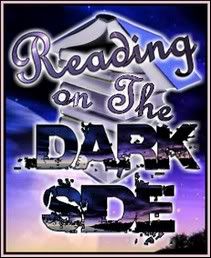 “Luna’s themes are all lunar attributes – instinct, creativity, luck, femininity, water element, miracles (on a Blue Moon) – also safety in travel. Her symbols are silver or white Items, water, moon images and the number 13. The Roman Goddess personifying the moon, Luna had the additional unique quality of being a protectress of charioteers, which in modern times could make Her a patroness of automobiles! “In Greek mythology, Selene was an archaic lunar deity and the daughter of the Titans Hyperion and Theia. In Roman mythology, the moon Goddess is called Luna, Latin for ‘moon’. She is generally depicted as a beautiful woman with a pale face and long, lustrous, black hair; riding a silver chariot pulled by either a yoke of oxen, a pair of horses, or a pair of serpentine dragons. Often, She has been shown riding a horse or bull, wearing robes and a half-moon on Her head and carrying a torch.” The temple of the moon goddess Luna on Aventine Hill was the site of worship, feasting, and wild dancing orgies. The untamed character of those abandoned revelries was the source of our word 'lunatic'.
“Luna’s themes are all lunar attributes – instinct, creativity, luck, femininity, water element, miracles (on a Blue Moon) – also safety in travel. Her symbols are silver or white Items, water, moon images and the number 13. The Roman Goddess personifying the moon, Luna had the additional unique quality of being a protectress of charioteers, which in modern times could make Her a patroness of automobiles! “In Greek mythology, Selene was an archaic lunar deity and the daughter of the Titans Hyperion and Theia. In Roman mythology, the moon Goddess is called Luna, Latin for ‘moon’. She is generally depicted as a beautiful woman with a pale face and long, lustrous, black hair; riding a silver chariot pulled by either a yoke of oxen, a pair of horses, or a pair of serpentine dragons. Often, She has been shown riding a horse or bull, wearing robes and a half-moon on Her head and carrying a torch.” The temple of the moon goddess Luna on Aventine Hill was the site of worship, feasting, and wild dancing orgies. The untamed character of those abandoned revelries was the source of our word 'lunatic'.  Among the most ancient symbols of rebirth or resurrection was the colored and ornately decorated egg. It goes back in time to at least 7000 BCE and reflects the Earth goddess Gaia and was the reason for numerous celebrations of spring in all nations from the Nordic world to Greece to Egypt and beyond. Only later, when the institution established by the Emperor Constantine (known as the Christian church after he had his warrior bishops agree to the unification of various sects of Christians in all reaches and regions of the empire) at his Council of Nicaea. It was the emperor who defined that the egg would be adopted as a symbol of the resurrection of Jesus of the NewTestament in an effort to get all people of the empire to worship Sol Invictus (God of the Sun or Son of God) as the supreme god and lord over other gods (monotheism was an unwelcomed novel idea that generated in Egypt, and was not a part of Judaism until after the Exodus, and even then, through the days of the Prophets, the Jews turned to worship many deities). (A fascinating blog post on the day here!)
Among the most ancient symbols of rebirth or resurrection was the colored and ornately decorated egg. It goes back in time to at least 7000 BCE and reflects the Earth goddess Gaia and was the reason for numerous celebrations of spring in all nations from the Nordic world to Greece to Egypt and beyond. Only later, when the institution established by the Emperor Constantine (known as the Christian church after he had his warrior bishops agree to the unification of various sects of Christians in all reaches and regions of the empire) at his Council of Nicaea. It was the emperor who defined that the egg would be adopted as a symbol of the resurrection of Jesus of the NewTestament in an effort to get all people of the empire to worship Sol Invictus (God of the Sun or Son of God) as the supreme god and lord over other gods (monotheism was an unwelcomed novel idea that generated in Egypt, and was not a part of Judaism until after the Exodus, and even then, through the days of the Prophets, the Jews turned to worship many deities). (A fascinating blog post on the day here!) Taweret (Tawret, Taueret, Tawaret, Taurt, Thoeris and Toeris, Ipy, Ipet, Apet, Opet, Reret) was an ancient Egyptian patron of childbirth and a protector of women and children. Like Bes, she was considered to be a ferocious demon as well as a protective and nurturing deity. She was associated with the lion, the crocodile, and the hippo; all animals which were feared by the Egyptians but also highly respected.
 Initially she was viewed as a dangerous and potentially malignant force. Taweret was associated with the northern sky as Nebetakhet, the "Mistress of the Horizon". She represented the circumpolar stars of Ursa Minor and Draco (the little dipper formed her back) who guarded the northern sky. The northern sky was thought to be cold, dark and potentially dangerous and was associated with both Apep and Set. According to one ancient myth, her husband Apep could only come out during the night and so she represented all that was evil during the day. However, by the Old Kingdom she was seen as a protective, rather than an aggressive force (just as female hippos came to be seen as aggressive largely in defense of their young). As a result, Taweret became a mother goddess and a patron of childbirth who was often described as the mother or wet nurse of the pharaoh. As time passed she soon became a household deity, helping rich and poor alike.
Initially she was viewed as a dangerous and potentially malignant force. Taweret was associated with the northern sky as Nebetakhet, the "Mistress of the Horizon". She represented the circumpolar stars of Ursa Minor and Draco (the little dipper formed her back) who guarded the northern sky. The northern sky was thought to be cold, dark and potentially dangerous and was associated with both Apep and Set. According to one ancient myth, her husband Apep could only come out during the night and so she represented all that was evil during the day. However, by the Old Kingdom she was seen as a protective, rather than an aggressive force (just as female hippos came to be seen as aggressive largely in defense of their young). As a result, Taweret became a mother goddess and a patron of childbirth who was often described as the mother or wet nurse of the pharaoh. As time passed she soon became a household deity, helping rich and poor alike. When acting as a protective force Taweret is described as a goddess. She was thought to help women in labor and to ward off evil spirits and demons who intended harm to mother or baby. She was also thought to help with matters of female sexuality and pregnancy, and so she was often associated with the goddess Hathor. (read the rest of this goddess’ story here!)
 And Of Course Happy Easter! This is my festival tree in celebration of the holiday that rests on my front porch! In non-Christian religious symbolism, the pointed oval or vesica piscis shape can represent the female genitalia (the vagina) which led to many early Christians who only heard about Jesus to assume that this Christ was a female saviour–one they were accustomed to, as a male saviour was seen as weak and of little spiritual value in petitioning Eostre or any of her husbands. The place where the popularity of “easter eggs” was greatest was in Northern Germany, and from there it spread most rapidly to all German lands and German (High and Low) speaking people. It is for this reason that the Bishop of Rome (who later would have the audacity to style himself The Pope) would agree to allow eggs to be eaten by the clergy on Easter Sunday (the day most sacred to Eostre and her husbands and children). What separated the commoners from the clergy was that the commoners would color their eggs and continue to present them as presents–usually tied neatly to a tree.
And Of Course Happy Easter! This is my festival tree in celebration of the holiday that rests on my front porch! In non-Christian religious symbolism, the pointed oval or vesica piscis shape can represent the female genitalia (the vagina) which led to many early Christians who only heard about Jesus to assume that this Christ was a female saviour–one they were accustomed to, as a male saviour was seen as weak and of little spiritual value in petitioning Eostre or any of her husbands. The place where the popularity of “easter eggs” was greatest was in Northern Germany, and from there it spread most rapidly to all German lands and German (High and Low) speaking people. It is for this reason that the Bishop of Rome (who later would have the audacity to style himself The Pope) would agree to allow eggs to be eaten by the clergy on Easter Sunday (the day most sacred to Eostre and her husbands and children). What separated the commoners from the clergy was that the commoners would color their eggs and continue to present them as presents–usually tied neatly to a tree.  The Easter Bunny is sometimes depicted with clothes. In legend, the creature carries colored eggs in his basket, candy and sometimes also toys to the homes of children, and as such shows similarities to Santa Claus, as they both bring gifts to children on the night before their respective holiday. It was first mentioned in Georg Franck von Frankenau's De ovis paschalibus (About Easter Eggs) in 1682 referring to an Alsace tradition of an Easter Hare bringing Easter Eggs.
The Easter Bunny is sometimes depicted with clothes. In legend, the creature carries colored eggs in his basket, candy and sometimes also toys to the homes of children, and as such shows similarities to Santa Claus, as they both bring gifts to children on the night before their respective holiday. It was first mentioned in Georg Franck von Frankenau's De ovis paschalibus (About Easter Eggs) in 1682 referring to an Alsace tradition of an Easter Hare bringing Easter Eggs.




No comments:
Post a Comment